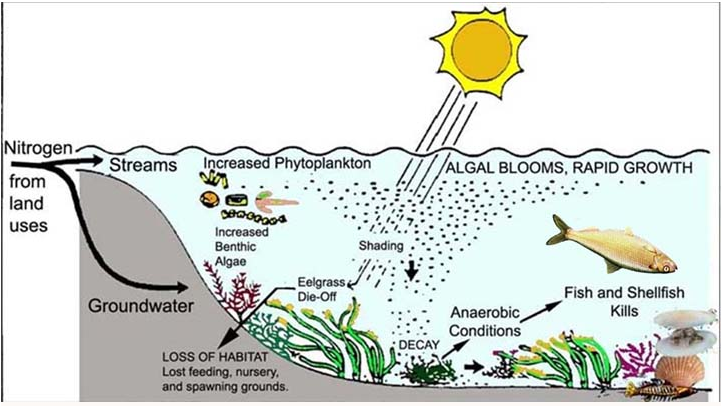Description

Copyright infringement is not intended
Context: An imbalance in nitrogen availability has been reported across the globe, with some places having an excess and others a shortage of the element, according to a new report.
Report highlights:
- Imbalance in nitrogen availability has been hurting aquatic and terrestrial life that feed on it.
- Without nitrogen, an essential nutrient, plants grow slowly and produce smaller flowers and fruits. Their leaves turn yellowish and are less nutritious to insects, birds and animals.
- Nitrogen availability has been shrinking in grasslands in central North America for a hundred years. Tropical and boreal forests are particularly more vulnerable.
- Plants grow quickly when exposed to high carbon dioxide (CO2) concentrations. Thus, their demand for nitrogen also goes up.
- Declining nitrogen availability can be linked to insect apocalypse. Plants with low nitrogen levels can encourage swarming in some species of locusts.
- Further, low nitrogen availability could limit plants’ ability to capture CO2 from the atmosphere.
- When excessive nitrogen accumulates in the streams, inland lakes and coastal bodies of water, it could sometimes result in eutrophication, leading to harmful algal blooms, dead zones and fish kills.
- In humans, high levels of nitrogen in the groundwater are linked to intestinal cancers and miscarriages and can be fatal for infants.
- Reactive nitrogen compounds like NOx, ammonia and the greenhouse gas nitrous oxide impact air, water and soil quality, health, biodiversity and climate change, among others.
- Millions of lives and livelihoods are affected by nitrogen pollution, apart from loss of fertilisers worth billions of dollars from farms.
Factors contributing to nitrogen decline:
- High CO2 levels dilute plant nitrogen, triggering a cascade of effects that lower the availability of nitrogen
- Warming and disturbance including wildfire.
India and Nitrogen Pollution:
- The Indian government’s subsidy on N-fertilizer (mainly urea) is over ₹ 50,000 crore per annum.
- The farmer pays only a quarter of the market price of urea and harvests a similar proportion of it into the grain, at a Nitrogen Use Efficiency (NUE) of 25-30%. The rest of it is lost as N-pollution.
- According to the Indian Nitrogen Assessment (2017), agricultureaccounts for over 70% of all nitrous oxide emissions in the Indian environment, out of which 77% is contributed by fertilizers, mostly urea.
- Nitrous oxide is a greenhouse gas (GHG) that is 300 times more powerful than carbon dioxide.
- It has replaced methane as the second-largest GHG emission from Indian agriculture over the last 15 years.
- Cereals account for over 69% of the total consumption of N fertilizers in India, with rice topping the list at 37%, followed by wheat (24%).
The International Nitrogen Initiative:
- The International Nitrogen Initiative (INI) is an international program, set up in 2003 under the sponsorship of the Scientific Committee on Problems of the Environment (SCOPE) and from the International Geosphere-Biosphere Program (IGBP).
- The key aimsof the INI are to:
- optimize nitrogen’s beneficial role in sustainable food production, and
- minimize nitrogen’s negative effects on human health and the environment resulting from food and energy production.
- The INI holds a conference every three years, inviting members of the international nitrogen community to meet up and discuss ideas and exchange knowledge on nitrogen issues.
- The last INI conference was held in Melbourne, in December 2016.
- This conference was attended by 380 delegates from over 33 countries.
- A key output of the conference was The Melbourne Declaration, which recognize the management of reactive nitrogen is closely related to the UN Sustainable Development. It calls for responsible Nitrogen Management for a sustainable future.
https://www.downtoearth.org.in/news/pollution/nitrogen-levels-on-a-decline-in-nitrogen-rich-world-plants-and-animals-may-face-consequences-study-82431















